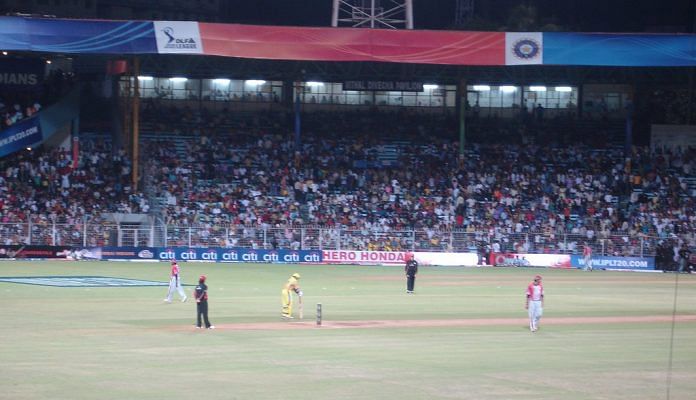For anyone worried about the erection of barriers between economies, people and capital, a modest living room in suburban Denver would give some relief.
Thanks in large part to the rising power of Indian commerce and the South Asian diaspora in the U.S., your columnist could settle into a chair at his mother-in-law’s home and binge during the wee hours on World Cup cricket last month. The means was a cable channel that began as a niche outfit catering to a prominent immigrant community and has grown into a corporate operation with ambitions to create an American taste for cricket.
The sport’s growth is more than just an idiosyncrasy of the Anglosphere. It goes beyond indulgences enabled by the digital revolution and the array of offerings on cable like curling, billiards or poker. Think of it as a salve to the myopia of trade conflict, technology wars and the idea that the world is breaking into competing camps or rival platforms.
While cricket’s ancestral roots and folk history belong to England and Australia, the financial and organizational lodestar is India. The giant nation is as close to a one-sport country as you can get. Cricket transcends language, sectarian and geographic barriers at home and unites Indians abroad. India’s rise is synonymous with the 21st century spread of cricket.
So, if deglobalization needed a single rebuttal, Willow TV could be it. It’s easy to think of globalization as taking something from the developed world, such as Starbucks or European football, and selling into emerging economies. Beaming cricket into American homes goes a step further. It ships sport from a key emerging market to the developed world, reckons James Crabtree, who devotes part of his book “The Billionaire Raj” to the industrial qualities of Indian cricket.
Also read: Yes, we tried to get Indian cricketers for rebel tour, South Africa cricket ex-boss says
At the intersection of these tectonic trends is Willow, which I first encountered in New York, where I lived for three years before moving to Singapore in January. I re-engaged with Willow, founded in 2010, last month. The channel, named for the type of wood that cricket bats were traditionally crafted from, offers an unrelenting, 24-7 diet of cricket concentrated on teams from India, Pakistan, Bangladesh and Sri Lanka.
Much of it caters to the South Asian community in the U.S., much of it in the New York-New Jersey area. The advertising spans the very parochial – immigration lawyers, cash remittance services and an astrologer – to bigger plays that hint at the size of the diaspora. State Farm Mutual Auto Insurance Co. crafted spots aimed at this demographic. The Allstate Corp., another insurer, and Toyota Motor Corp. are also in on the act, according to Satyan Gajwani, vice chairman of Times Internet Ltd., which bought Willow in 2016.
Gajwani says that in a recent month the average viewer of Willow – billed as the only U.S. channel devoted entirely to cricket – spent 26 hours watching the channel. He points to the footprint of the Asian population in the U.S., which Pew Research Center said in 2017 was the fastest-growing racial or ethnic group. People of Indian origin are the second-biggest component after ethnic Chinese. By 2055, Asians will become America’s largest immigrant group, making up 38% of all newcomers, versus 31% for Hispanics.
Willow is committed to broadening cricket’s appeal as a sport in the U.S. Gajwani has partnered with USA Cricket to develop an American T-20 contest, betting that an abbreviated, smash-and-bash version of the game will go down well. American kids grew up playing soccer and as adults many now ardently follow Chelsea or Liverpool. Why not cricket, which has become less hidebound to the classic five-day Test match of tradition?
There’s a potential flipside that may work against the melting pot. Decades ago, newcomers to the U.S. who were keen on sports had no choice but to immerse themselves in baseball, basketball and the National Football League. Now, people can relax from a hard day and watch an Indian Premier League game between the Hyderabad Sunrisers and the Rajasthan Royals, as they would in the suburbs of Mumbai or New Delhi.
Work in America, come home to India. Given the still-overwhelming weight of American culture, it’s hard to find a sinister side to this. Anything that enables us to see beyond our backyards is a plus. – Bloomberg
Also read: Ladakh cricketers will represent Jammu & Kashmir in domestic circuit for now: CoA Vinod Rai







Because of these type of authors Kashmiri Pandits and the people of Ladak suffered. These people spread religious hatred venom more than any terrorist act which will create 1000s of brainwashed terrorists.
good
didn’t even manage to tread past 2 para. The journalist clearly shows the bias and tried to divide everything communally
I think the journalist herself is clueless about the jammu and kashmir. No mam it’s not about muslims vs Hindus. There are a huge proportions of Hindus and Buddhists also ( thanks to the Lord whose haven’t suffered a genocide yet! Unlike the KPs. Touch wood ) It’s a Catch 22 the title itself shows what’s wrong it’s the ideology of majoritarian muslims thats pushing minorities to periphery in j and k
Muslims in India just side with the muslims and this article is proof Jand K demography is pretty much same as 1947 ( just the original inhabitants have been forced out )
There’s equally sensitive Assam where the demography has been totally skewed by decades of illegal immirantion but they will all run to save the culprits becoz apparentlywhats applies to muslims doesn’t apply to Hindus and that has always been the case. It’s muslims who are pulling themselves at periphery instead of rectifying you will just like always just keep doing mental gymnastics to justify any bullshit